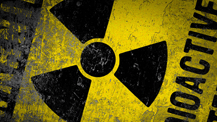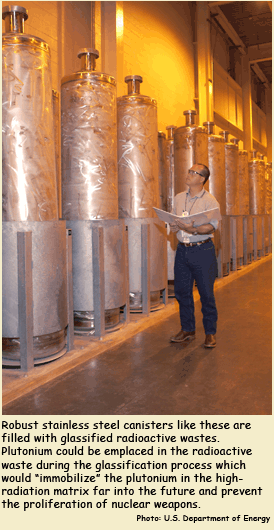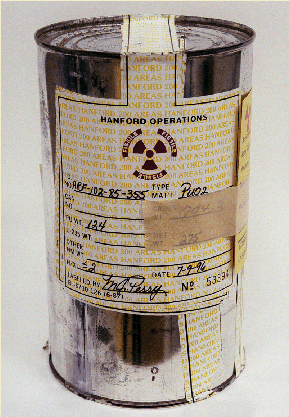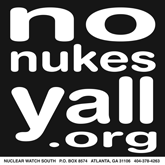

FUKUSHIMA NEWS
~ ~ ~ ~ ~ ~ ~
Help the
NO NUKES Y'ALL
campaign
y'all
Nuclear Watch South is a 501(c)(3) tax-deductible charitable organization.
{ thanks }
PayPal
It's your
safe and secure
way to donate on-line
 |
~ ~ ~ ~ ~ ~ ~

Educating and activating the grassroots to create a
nuclear-free future
~
PO Box 8574
Atlanta, GA 31106
404-378-4263
Cell 404-432-8727
info@nonukesyall.org
NO NUKES Y'ALL!
PLUTONIUM | PLUTONIUM IMMOBILIZATION
PLUTONIUM IMMOBILIZATION
 PLUTONIUM is a man-made element that is made in nuclear reactors. When enough uranium is concentrated in a critical mass, it "fissions" and the uranium atoms collide and break and recombine to make other elements called "daughter radionuclides." Many of these radionuclide byproducts made in the nuclear reaction are quite radioactive and are so lethal that anyone trying to handle them or get near them would die immediately. The nuclear chain reaction process also generates immense heat, and it is the heat byproduct that nuclear energy uses to boil water and make electricity.
PLUTONIUM is a man-made element that is made in nuclear reactors. When enough uranium is concentrated in a critical mass, it "fissions" and the uranium atoms collide and break and recombine to make other elements called "daughter radionuclides." Many of these radionuclide byproducts made in the nuclear reaction are quite radioactive and are so lethal that anyone trying to handle them or get near them would die immediately. The nuclear chain reaction process also generates immense heat, and it is the heat byproduct that nuclear energy uses to boil water and make electricity.
Plutonium is also created when uranium is fissioned. Every bit of plutonium on earth was made by people. At SAVANNAH RIVER SITE (SRS) five reactors ran for 40 years for the sole purpose of converting uranium to plutonium. The plutonium was extracted from the used reactor fuel to make nuclear bombs. The irradiated reactor fuel was chopped into tiny pieces and dissolved in nitric acid solvents producing 35,000,000 gallons of hazardous liquid acid wastes with all the intensely radioactive daughter byproducts. The plutonium was sent all over the country to be fabricated into weapons and deployed in bombs. The wastes were put into underground storage tanks at SRS where they remain to this day.
A factory has been built at SRS to turn the lethal radioactive liquid wastes into radioactive glass for storage in underground vaults until a national deep geologic repository opens. Although South Carolina is eager to see the waste leave its state, it would be progress in the right direction to stabilize the liquid radioactivity in solid form for interim storage.
 Just a few pounds of plutonium deploys a bomb that can destroy a city, and plutonium is so toxic that a few grains, if inhaled, will induce lung cancer. Plutonium is not, however, very radioactive which means it is vulnerable to being stolen and used in nuclear weapons. There are tons and tons of nuclear-weapons-usable plutonium in many places all over the world. There is a reason for all the fuss about Iran and North Korea and everybody getting the ability to make nuclear weapons because the only hard part of acquiring an atom bomb is acquiring a few pounds of plutonium. All those tons of plutonium must be kept very secure.
Just a few pounds of plutonium deploys a bomb that can destroy a city, and plutonium is so toxic that a few grains, if inhaled, will induce lung cancer. Plutonium is not, however, very radioactive which means it is vulnerable to being stolen and used in nuclear weapons. There are tons and tons of nuclear-weapons-usable plutonium in many places all over the world. There is a reason for all the fuss about Iran and North Korea and everybody getting the ability to make nuclear weapons because the only hard part of acquiring an atom bomb is acquiring a few pounds of plutonium. All those tons of plutonium must be kept very secure.
The U.S. has about 50 tons of plutonium that is not being used in weapon and so they decided to "retire" it. The program is called "surplus plutonium disposition." There were two forms of plutonium disposition considered, immobilizing plutonium in the radioactive waste discussed above, and/or re-processing it into a new type of plutonium reactor fuel called MOX, for mixed oxides of uranium and plutonium. Since 2000, Congress has unfortunately committed us to a dead-end MOX boondoggle that is squandering $500 million a year, is 10 years behind schedule, and cannot meet the basic plutonium disposition goal because Duke Energy backed out of using MOX in their reactors which was the fundamental rationale to complete the MOX cycle — that is, irradiating the plutonium fuel so it would be lethally hot.
Plutonium immobilization is preferred to MOX for several reasons. Plutonium immobilization is straight-forward and efficient when compared to MOX and sidesteps multiple processing, handling, and transport steps that expose MOX to environmental and proliferation risks.
The U.S. government began an Environmental Impact Statement on plutonium immobilization at SRS in 2007, but never completed the process. Plutonium immobilization a straightforward approach which accepts that excess plutonium is a waste would be cheaper and more effective than MOX which at this point has zero prospective reactors with which to create the high-radiation barrier field around the plutonium.
SRS with its vast back-log of tank waste and the Defense Waste Processing Facility is a good candidate for plutonium immobilization.
STOP THE MOX BOONDOGGLE TODAY!
The U.S. MOX program is now 10 years behind schedule. Duke Power declined to renew its contract to place MOX fuel in its reactors after the MOX fuel test failed. Even if another utility is willing to risk its aging reactors on experimental plutonium fuel, there is no longer a factory in France to manufacture fuel for the legally required multi-year MOX test.
Meanwhile, MOX factory construction is proceeding at a cost to taxpayers of $500 million per year and is already reportedly 30 percent constructed, though the design remains only 75 percent complete. Still to be designed are vital and fundamental features such as plutonium security and radioactive MOX waste management. The U.S. Nuclear Regulatory Commission has issued notices of violation to MOX contractor Shaw AREVA MOX Services for failures ranging from installation of substandard rebar and concrete to building without properly signed design documents.
The alternative to MOX, immobilization of plutonium in high-level waste stocks headed for glassification, is the plutonium disposition path preferred by environmentalists.
"To the village square
we must carry the facts
of atomic energy.
From there must come America's voice."
ALBERT EINSTEIN
~~~~~~

~~~~~~
MORE
ON PLUTONIUM
IMMOBILIZATION
PLUTONIUM WAITS
Glenn Carroll
JUST CAN IT
Edwin S. Lyman, Ph.D.
PLUTONIUM END GAME
Arjun Makhijani, Ph.D.
PLUTONIUM IMMOBILIZATION
U.S. Dept. of Energy
~~~~~~
PLUTONIUM FACTS
Year plutonium was discovered by Glenn Seaborg and others
1941
Minimum amount of plutonium required for bomb
1 kilogram (2.2 pounds)
Amount of plutonium used in Nagasaki bomb
6.5 kilograms
Average amount of plutonium used in modern atom bomb
3 kilograms
Estimated amount of U.S. weapons-grade plutonium
85,000 kilograms (93.5 tons)
Estimated amount of Russian weapons-grade plutonium
160,000 kilograms (176 tons)
Hazards associated with plutonium
Radiation, fire, inhalation, ingestion, criticality, reactivity, decay
Length of time that
plutonium 239 (weapons-grade) remains hazardous
240,000 years
(Ten 24,000-year half-lives)
Form of plutonium most hazardous to life
Plutonium oxide powder
What happens to plutonium metal when exposed to air
Gradually turns to
plutonium oxide powder
Lethal amount of plutonium oxide powder (inhaled)
2000 micrograms
Lethal amount of plutonium oxide powder (ingested)
500,000 micrograms
Amount of sugar substitute in average 1 gram package
1,000,000 micrograms
Excerpted from Stop Plutonium Fuel: Plutonium Index, compiled by Don Moniak. Blue Ridge Environmental Defense League, www.bredl.org
